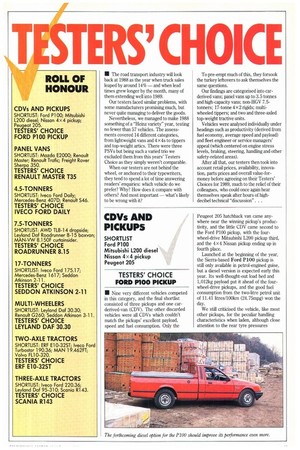TERS' CHOICE
Page 29

If you've noticed an error in this article please click here to report it so we can fix it.
IN The road transport industry will look back at 1988 as the year when truck sales leaped by around 14% — and when lead times grew longer by the month, many of them extending well into 1989.
Our testers faced similar problems, with some manufacturers promising much, but never quite managing to deliver the goads.
Nevertheless, we managed to make 1988 something of a "Heinz variety" year, testing no fewer than 57 vehicles. The assessments covered 14 different categories, from lightweight vans and 4 x 4s to tippers and top-weight artics. There were three PSVs but being such a varied trio we excluded them from this years' Testers Choice as they simply weren't comparable.
When our testers are not behind the wheel, or anchored to their typewriters, they tend to spend a lot of time answering readers' enquiries: which vehicle do we prefer? Why? How does it compare with others? And most important — what's likely to be wrong with it? To pre-empt much of this, they forsook the turkey leftovers to ask themselves the same questions.
Our findings are categorised into carderived vans; panel vans up to 3.5 tonnes and high-capacity vans; non-HGV 7. 5tanners; 17-tonne 4 x 2 rigids; multiwheeled tippers; and two and three-axled top-weight tractive units.
Vehicles were analysed individually under headings such as productivity (derived from fuel economy, average speed and payload) and fleet engineer or service managers' appeal (which centered on engine stress levels, braking, steering, handling and other safety-related areas).
After all that, our testers then took into account retail prices, availability, innovation, parts prices and overall value-formoney before agreeing on their Testers' Choices for 1989, much to the relief of their colleagues, who could once again hear themselves speak after hours of highdecibel technical "discussion".
































































































